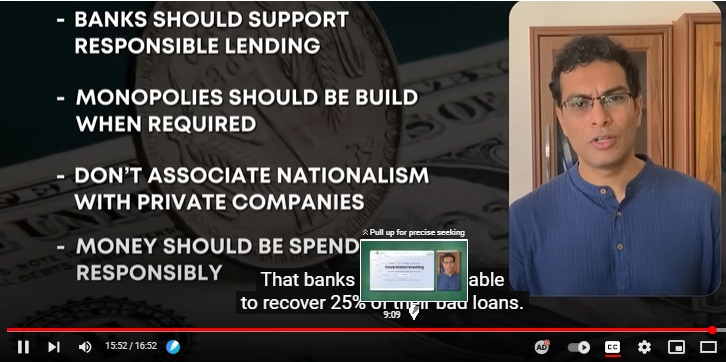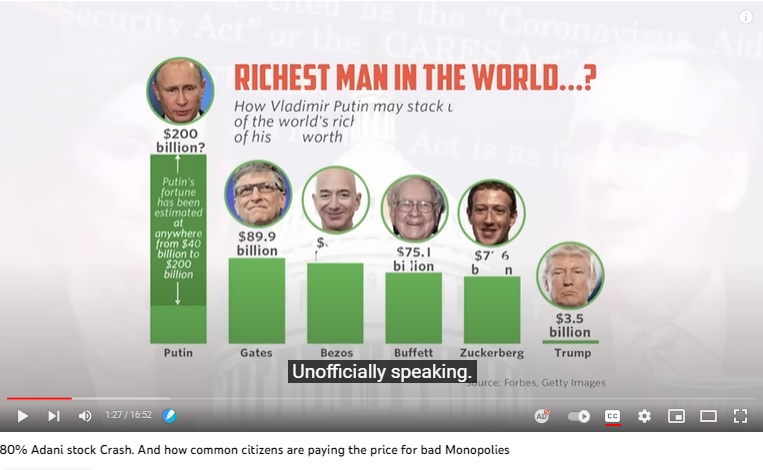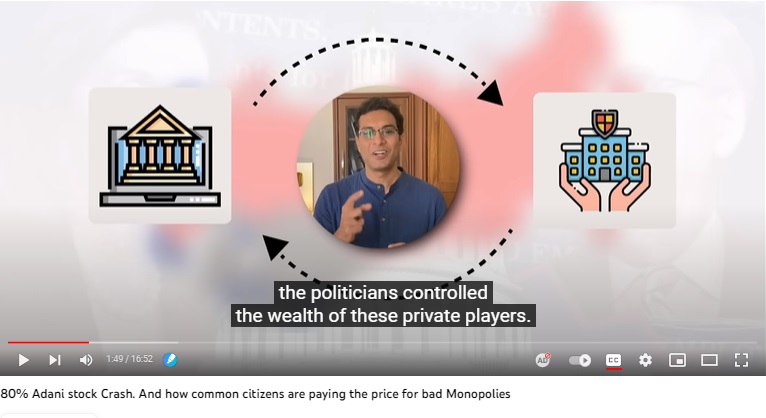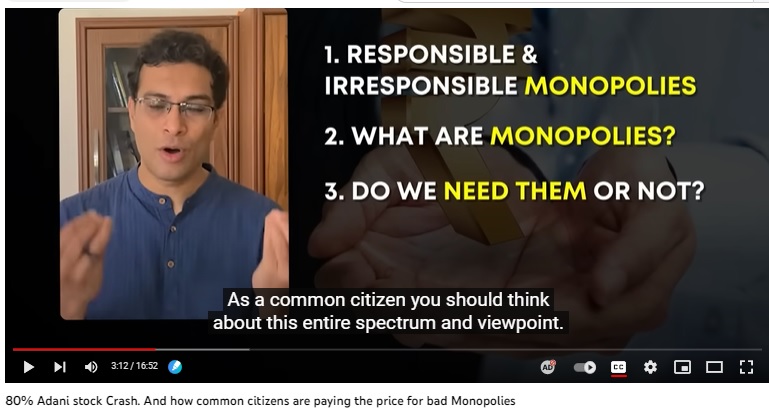Economy & Equity
BMC scraps 1.8k vacant posts, hundreds of contract staff hit https://timesofindia.indiatimes.com/city/mumbai/bmc-cuts-1840-vacant-posts-contract-staff-including-doctors-face-uncertain-future/articleshow/114436768.cms Oct 21, 2024 Hundreds of contractual staffers, including doctors, could be laid off this month owing to BMC scrapping 1,840 permanent posts that have been vacant for at least three years. Of these posts, 826 are in peripheral hospitals.
A senior permanent doctor at Bhabha Hospital, Bandra, cautioned that without these staffers, "hospitals would collapse".
Whatsapp: LJ: The state government has endeavoured to fill vacant posts in the suo moto PIL on the Nanded hospital deaths before chief justice, and here they are scrapping the posts. The issue of understaffing is so severe. H: Yes and look at the even more ridiculous justification: since posts are unfilled, it indicates they are not needed. By that logic, the city has no elected representatives for two years, perhaps we don't need them either?
GS: It is a dereservation ploy. Something similar happened with University teachers too. Surprised they did it before elections. The state government has what they call zero budgeting and has had no new recruitments for several years now. SG: This is fall out of all budget going for schemes to further gain in election.
JD: It is also a part of a larger plan to promote privatisation of hospitals. Just like BSNL, and maintenance of Indian Railways, the bid is to run down public services to the ground.... It is also a part of a larger plan to promote privatisation of hospitals. Just like BSNL, and maintenance of Indian Railways, the bid is to run down public services to the ground..
मेधा पाटकर का ये बयान अगर आपने नही देखा तो कुछ नही देखा तो जल्दी देखिए! https://www.youtube.com/watch?v=59BSb5uWhwE 27 jAN 2023
@biswanathmitra3039
@biswanathmitra3039 Patkar madam has coined a new term "profit over nature"! In fact, the prevalent systems are helping the greedy groups to exploit the innocent peoples more and more, causing social desastars! Sincere concerns from connected agencies can only help restoring the conditions
HNP NEWS
The drive to privatise everything has led to consultants taking on the work of public servants. But at what cost?
PwC is under intense scrutiny after it was alleged the firm misused confidential government tax information for commercial gain. It is alleged that, after the firm advised the government on tougher tax laws, it then leaked the design of those laws to its clients – many of whom would be targeted by the proposed laws.
However, as the PwC scandal illustrates, the excessive use of consultants has very real implications for democratic decision-making.
Indeed, many experts argue the influx of consultants represents a shadow government that is plundering the public sector. Some go so far as to say that it represents private control over public policy.
It is therefore timely to consider why governments use consultants so much, why that might be a problem, and what we can do about it.
by Marty Bortz
11/08/2023
Akshat Shrivastava https://www.youtube.com/watch?v=58BFNeLOxJA
https://youtu.be/58BFNeLOxJA?t=607 analysing how common citizens are paying the price for bad Monopolies

Adani Power | महावितरण खाजगीकरणा विरोधात विद्युत कर्मचारी मैदानात..
Zoom Marathi Dec 14, 2022
महावितरण जळगाव झोनचे कर्मचारी खासगीकरणा विरोधात मैदान..
अदानी पावर इलेक्ट्रिकल कंपनी'ने राज्य सरकारच्या मालकीची महावितरण कंपनी वीजपुरवठा करत असलेल्या भांडुप परिमंडळातील ठाणे, नवी मुंबई, उरण व पनवेल या परिसरामध्ये वीजपुरवठा करण्याचा समांतर परवाना राज्य वीज नियामक आयोगाकडे मागितला असून त्याला पाचोऱ्यात जळगाव झोन मधील महावितरण कंपनीच्या अधिकारी व कर्मचारी संघाने विरोध केला आहॆ.
सरकार नागरी विभागातील नफा देणारे जलविद्युत विभाग खाजगी कंपन्यांच्या घशात घालण्याचे उद्योग करत आहेत. व सरकारी कोळसा खाणी खाजगी उद्योजकांच्या घशात घालून महावितरण कंपनीला कोलदांडा घालण्याचे पातक करत असल्याचा आरोप कर्मचारी संघटनेने केला आहे.
(ggogle translation: Employees of Mahavitaran Jalgaon zone against privatization.
Adani Power Electrical Company has sought a parallel license from the State Electricity Regulatory Commission to supply electricity in the areas of Thane, Navi Mumbai, Uran and Panvel in Bhandup circle where the state-owned Mahavitaran Company is supplying electricity. .
The government is in the business of shoving the profit-making hydropower sector of the civil sector into the throats of private companies. And the employees' association has accused that the government coal mines are trying to put a trap on the Maha distribution company by putting it in the throat of private entrepreneurs.
- Issues with Privatisation of Essential Services and Free Speech Institutions
- SC Dismisses Kerala Govt's Plea Against Adani Group's Takeover of Thiruvananthapuram Airport
- Understanding Deregulation, Privatisation & Economic Reforms
- Pawan Hans Sale: Cayman Firm in Winning Bid Flayed By NCLT
- the biggest privatisation scam in India
- Welcome Kerala Legislative Assembly’s resolution opposing disinvestment of the LIC
- Where has all the silver gone?
- LIC IPO- Gross injustice to the smaller LIC policy holders, especially those belonging to the SCs/STs/OBCs
- How to kill LIC -story behind IPO
- The political economy of CPSE disinvestmen
- Companies Bought & Sold by different Prime Ministers
- Public Private Partnerships – Subsidy and Impunity for Private Corporations
- CEL Sale
- On Trend for Privatisation: Kanhaiya Kumar
- Privatisation of CEL
- Privatisation: What Does It Really Mean?
- Dayanidhi Maran Shows Mirror To Govt On NPA Write-off and Haircut To Corporates
- virtually extending the lease in perpetuity
- World Bank offers to help National Rail Plan B
- Privatising power distribution: A hoax
- Modi’s Monetisation Worse than Demonetisation.
- Economics of Monetisation of Assets
- Monetisation: Designed To Create 2-3 Monopolies
- Privatised Infrastructure by Adani Group
- To BEST: Why are we waiting for hours?
- Pre-Paid electricity meters to be like FASTAG!



